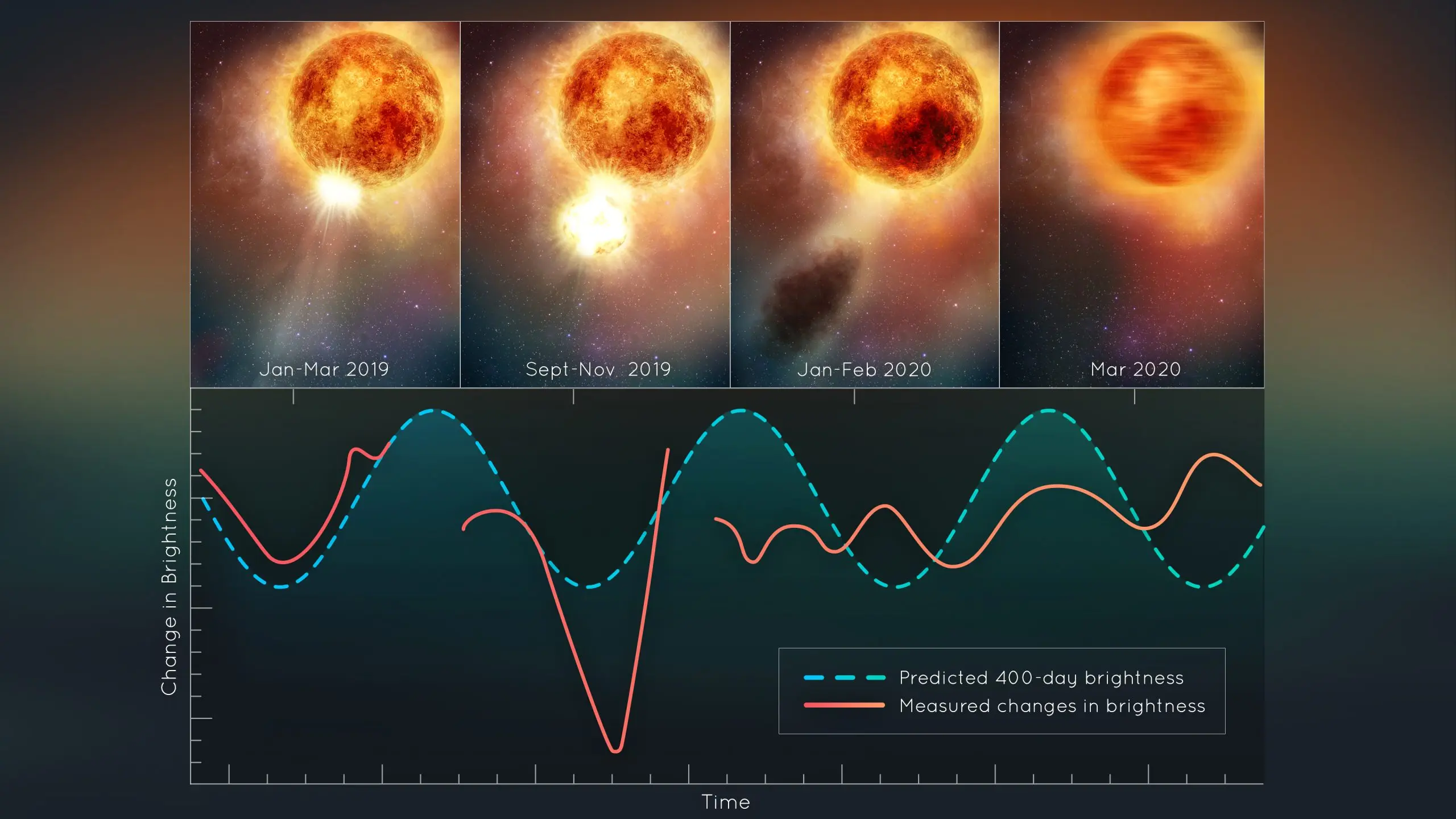In the vast expanse of the cosmos, amidst the constellation Orion, lies the captivating and brilliant red star known as Betelgeuse. Revered as ‘Ārdrā’ in Indian astronomy, this celestial wonder has long captured the fascination of stargazers worldwide. However, recent scientific studies have unveiled a captivating secret about Betelgeuse that could forever alter the tapestry of our night sky.
Astronomers, armed with their insatiable curiosity and cutting-edge research, have delved into the depths of Betelgeuse, shedding light on its cosmic fate. Through meticulous observation and analysis, they have discerned that this colossal red giant star is gradually edging closer to the latter stages of its extraordinary life. Experts suggest that Betelgeuse is poised to embark on the carbon-burning phase, a pivotal precursor to a potentially cataclysmic supernova explosion, all within the span of a few decades.
Stars, those celestial beacons that ignite the heavens, are born from dense clouds of gas and dust, known as nebulae. In a cosmic ballet of nuclear fusion, these newborn stars transmute hydrogen into helium, unleashing energy and casting ethereal light upon the universe. Yet, as a star’s hydrogen fuel reserves dwindle, it undergoes a majestic metamorphosis, expanding and transforming into a resplendent red giant. During this awe-inspiring phase, helium takes centre stage, fusing into heavier elements like carbon and oxygen.
For smaller stars, such as our very own Sun, this grand spectacle culminates in a graceful shedding of outer layers, eventually forming a compact, dense remnant called a white dwarf. However, for their more massive brethren, like Betelgeuse, a different fate awaits. In an astronomical spectacle of unfathomable proportions, these colossal stars undergo a supernova explosion, their cores collapsing under immense gravitational forces. Such an event unleashes an astronomical maelstrom, a tempest of energy propelling heavy elements into the cosmos, and in some cases, birthing neutron stars or enigmatic black holes.
But how have astronomers unveiled the secrets held within the heart of Betelgeuse? How have they discerned the stage of this mighty red giant? The answer lies in the pulsations that ripple through its fiery depths. Betelgeuse pulsates rhythmically, akin to a simmering pot releasing its steam. This periodic expansion and contraction cause fluctuations in the star’s brightness, which keen-eyed researchers have meticulously scrutinized. By deciphering these subtle pulsations, astronomers can glean invaluable insights into the current state of this stellar giant, paving the way for a deeper understanding of its impending celestial fate.
As the scientific community awaits with bated breath, the countdown to Betelgeuse’s fiery finale commences. The potential for a supernova explosion within our lifetime beckons both excitement and trepidation, as this astronomical event promises to illuminate our night sky with an unparalleled celestial spectacle. While we may witness the birth of a new stellar object or behold the birth throes of a black hole, the true magnificence of Betelgeuse’s final act remains cloaked in the shroud of cosmic uncertainty.
So, let us cast our eyes upon the resplendent beauty of Betelgeuse, that radiant red star etched in the tapestry of Orion. Its imminent transformation serves as a poignant reminder of the ever-changing nature of the universe, urging us to contemplate the grandeur and impermanence of the cosmic dance in which we all partake.





